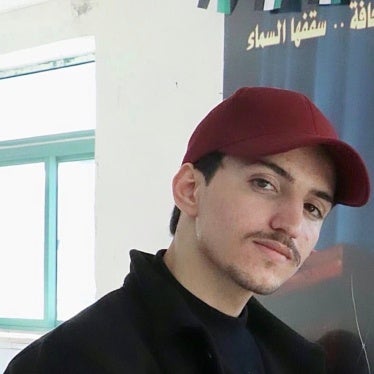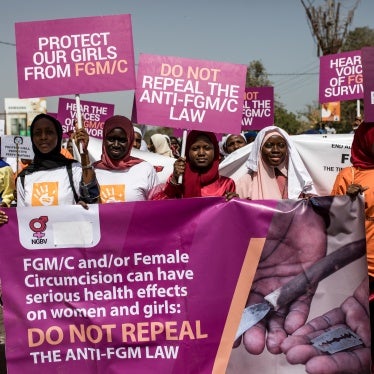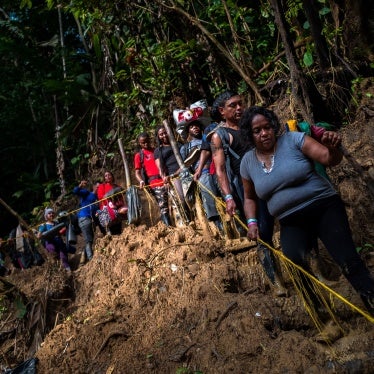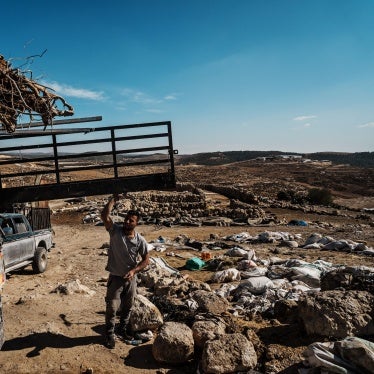Senior Counsellor of Justice Anatolii Matios
Chief Military Prosecutor of Ukraine
Deputy Prosecutor-General of Ukraine
Prosecutor General’s Office of Ukraine
Dear Senior Counsellor of Justice Anatolii Matios,
We are writing to request information about potential investigations your office may have conducted into a number of instances of shelling in eastern Ukraine that have damaged two health facilities and disrupted the provision of medical care. In particular, we seek information on whether investigations were conducted into these incidents, how they were carried out, and what they found. If no investigations were carried out, we ask that they be opened promptly and that conclusions be presented publicly.
As you are well aware, Human Rights Watch is an international nongovernmental organization that promotes respect for human rights and international humanitarian law and monitors violations by both states and non-state actors. We work in more than 90 countries around the world, including in many conflict zones. We have long been concerned about the impact of armed conflict on healthcare and particularly the frequency with which military operations result in damage to medical facilities or disruption of health care.
As you undoubtedly know, the Geneva Conventions, its additional protocols, and customary international humanitarian law grant hospitals and other medical facilities special protection in armed conflict. Parties to international and non-international armed conflicts must refrain from deliberately attacking these facilities or interfering with their functioning. They must take precautions to avoid harming them even when a military target is nearby. Customary international law also prohibits the use of medical units for military purposes. Ukraine’s 2004 manual on international humanitarian law prohibits attacks on medical facilities and personnel and recognizes the protections afforded to them.
In May 2016, the UN Security Council unanimously expressed deep concern about the increase in the number of violations of these obligations in resolution 2286 and urged countries around the world to take measures to prevent these incidents. The resolution also strongly condemned what it called the “prevailing impunity for violations and abuses committed against medical personnel and humanitarian personnel exclusively engaged in medical duties, their means of transport and equipment, as well as hospitals and other medical facilities in armed conflict.” It noted that this impunity may in turn contribute to the “recurrence of these acts.” It strongly urged states to “conduct, in an independent manner, full, prompt, impartial and effective investigations within their jurisdiction of [relevant] violations of international humanitarian law … and, where appropriate, take action against those responsible in accordance with domestic and international law, with a view to reinforcing preventive measures, ensuring accountability and addressing the grievances of victims.”
In 2015 and 2016, Human Rights Watch and partner organizations in the Safeguarding Health in Conflict Coalition documented hundreds of incidents where medical facilities were attacked or the provision of healthcare was otherwise disrupted in more than a dozen armed conflicts or situations of civil unrest throughout the world. Human Rights Watch is currently collecting detailed information on a selection of these incidents to determine whether they were properly investigated by the appropriate authorities and whether adequate steps were taken to hold accountable, as needed, those responsible.
As part of this project, we seek information about incidents of attacks that damaged two medical facilities in Ukraine.
In particular, we request that you provide information on potential investigations by the office of the chief military prosecutor of Ukraine into the following incidents:
- Shelling of the Krasnyi Liman Railway Hospital (now Liman City Hospital) in Krasnyi Liman (known as Liman since February 18, 2016), Donetsk region, on June 3, 2014. According to medical personnel interviewed by Human Rights Watch, mortars fired by Ukrainian forces damaged the facility’s roof, pharmacy, as well as the general therapy, surgery, and gynecology wings. One health professional died as a result of injuries he sustained in the shelling. Human Rights Watch previously wrote to President Petro Poroshenko (letter attached) urging Ukrainian authorities to open an investigation into this incident but has received no response to date.
- Shelling of Krasnodonskaya Central District Hospital in Novosvitlivka, Luhansk region between August 13 to August 26, 2014. During this time period, the Ukrainian army stationed soldiers, tanks, and other armored vehicles in the immediate vicinity of the hospital. Rebel forces then shelled the hospital repeatedly, which severely damaged the facility and caused it to suspend most services.
We provide more detailed information on each of these incidents in the annex to this letter. We seek your response to the following questions:
- We understand that the district prosecutor’s office in Krasnyi Liman opened an investigation into the shelling of the Railway Hospital in 2014. What is the status of that investigation? If it was completed, what were its findings? Has the investigation established whether the attack was intentional or not?
- If appropriate, what steps were taken to hold accountable those responsible for the attack on the hospital?
- Has the Prosecutor General’s Office of Ukraine or any other Ukrainian investigative agency conducted an investigation into the shelling of the Krasnodonskaya Central District Hospital in Novosvitlivka? If so, what did these investigations find regarding the role of the Ukrainian Ground Forces? Have these been made public?
- As part of the investigation, did investigators determine whether the apparent positioning of military vehicles in the immediate vicinity of the hospital violate international humanitarian law? If these actions were found to violate international humanitarian law, were any disciplinary actions or other steps taken to hold accountable those responsible?
- We also request copies of the findings of any investigation into both incidents for use in our work on attacks on medical facilities.
Thank you very much for your attention to this matter. We look forward to receiving your response.
Sincerely,
Diederik Lohman
Director
Health and Human Rights Division
Human Rights Watch
Annex – Detailed descriptions of relevant incidents
Incident involving the Railway Hospital in Krasnyi Liman, Donetsk region – June 3, 2014
GPS coordinates: 48°57'57.3"N 37°48'38.4"E; 48.965907, 37.810675
On July 2, 2014 Human Rights Watch researchers visited the Krasnyi Liman Railway Hospital in Donetsk region, located at 48°57'57.3"N 37°48'38.4"E. We conducted interviews with three of the hospital’s health workers, including the chief doctor and several Krasnyi Liman residents.
Medical personnel told Human Rights Watch that the hospital was shelled with mortars on June 3, 2014 from about 3:30pm to 3:40pm. They said that a total of nine mortars hit the hospital and its grounds. The hospital’s chief doctor told Human Rights Watch that they believed that Ukrainian forces, which at the time were wresting control over the area from Russia-backed rebel forces, fired the mortars.
The hospital’s chief doctor and two junior health workers told Human Rights Watch that the hospital had received no advance warning of an attack, and that patients had not been evacuated. The chief doctor said that a shell fragment struck the hospital’s only surgeon in the head. He died several days later from his wounds.
The chief doctor told Human Rights Watch that on the morning of June 4, soldiers from the Ukrainian military arrived at the hospital in an armored vehicle and asked to be shown through all the wards. According to the chief doctor, a commander showed the doctor a map and said: “Look here. Here is your hospital marked on the map. And it’s marked specifically as an insurgent hospital. That’s why it happened.” After inspecting all the wards and facilities, the military officials acknowledged that there were no militants present in the hospital and left. Two other medical workers interviewed separately by Human Rights Watch corroborated the chief doctor’s account. Another group of soldiers searched the hospital a second time on June 9.
During the visit to the facility, Human Rights Watch observed structural damage to the facility’s roof, walls, and windows (see Figures 1-3). The shelling seriously damaged the facility’s pharmacy and general therapy, surgery, and gynecology wings. Human Rights Watch viewed numerous photographs taken by hospital personnel right after the attacks and examined nine craters from the shells and several remaining fragments, which were consistent with a 120 mm mortar attack. Human Rights Watch also examined the neighboring buildings and noted that they had not suffered any damage except for small shell fragment damage to some of the walls, which suggests that the hospital building may have been targeted.
The hospital’s chief doctor told Human Rights Watch that he had promptly filed a complaint with the district prosecutor’s office and submitted all shell fragments and fragments to prosecutors. He said that the prosecutor’s office recorded his testimony and examined the hospital grounds. In July 2014, Human Rights Watch wrote a letter to President Petro Poroshenko (attached) urging further investigation into this incident but has received no response to date.[1] At the time of Human Rights Watch’s first letter to President Poroshenko in July 2014, the investigation by the district prosecutor’s office was still ongoing.
In light of Human Rights Watch’s observations that the hospital suffered disproportionate damaged due to the shelling compared to the surrounding area in addition to testimony that alleged a Ukrainian commander suggested that this medical facility was hit because insurgents were thought to be inside, Human Rights Watch is concerned that this medical facility may have been intentionally targeted. Under international humanitarian law, intentionally directing an attack against a medical facility exclusively engaged in medical activities is a war crime. As such, the Ukrainian authorities have an obligation to investigate this incident.
Human Rights Watch seeks the following information about the investigation into the attack on Krasnyi Liman Railway Hospital:
- We understand that the district prosecutor’s office in Krasnyi Liman opened an investigation into the shelling of the Railway Hospital in 2014. What is the status of that investigation? If it was completed, what were its findings? Has the investigation established whether the attack was intentional or not?
- If appropriate, what steps were taken to hold accountable those responsible for the attack on the hospital?
- We also request a copy of the findings of any investigation into this incident for use in our work on attacks on medical facilities.
Incident involving Krasnodonskaya Central District Hospital in Novosvitlivka, Luhansk region – August 13-28, 2014
GPS coordinates: 48°29'04.1"N 39°30'52.2"E; 48.484472, 39.514500
Between August 13 and 28, 2014, Novosvitlivka, Luhansk region was the scene of heavy fighting between Ukrainian government forces and rebel troops, during which the local hospital was hit repeatedly. Local residents told Human Rights Centre Memorial that Novosvitlivka was shelled by both sides from August 19 to 28 as Russia-backed rebel forces attempted to wrest control over the village from Ukrainian forces.[2] Residents described attacks on the village by mortars, Grads, and howitzers and attacks on the hospital by mortars and Grads. These reports were consistent with Human Rights Watch’s on-site observations.
On November 14, 2014, Human Rights Watch visited Krasnodonskaya Central District Hospital, located in Novosvitlivka at 48°29'04.1"N 39°30'52.2"E and gathered testimony from medical personnel and local residents.
Three ambulance workers told Human Rights Watch that Ukrainian forces (National Guard and Aidar battalion) entered the area on August 13 and positioned soldiers, three tanks, and several other armored vehicles in the immediate vicinity of the hospital. The hospital was repeatedly shelled over the course of the next two weeks. The Ukrainian forces moved their position away from the hospital on August 26 and left Novosvitlivka on August 28.
Two doctors and one nurse told Human Rights Watch that they stayed in the hospital basement throughout the shelling and continued to provide medical care to wounded civilians and Ukrainian soldiers. They also cared for four people with chronic health conditions who were moved into the basement, two of whom were paralyzed and one of whom was in a wheelchair.
Human Rights Watch researcher observed two severely damaged armored vehicles in the immediate vicinity of the hospital as well as one damaged tank and two more damaged armored vehicles across the road from the hospital (see Figures 11-14 below). Photo documentation by Human Rights Centre Memorial and Human Rights Watch shows that the damaged armored vehicles across the road from the hospital were within 100 meters of the main hospital building.[3] Witnesses said that these military vehicles were hit in the August 2014 shelling and had been left where they were hit by Ukrainian forces.
Hospital staff continued to treat the wounded from the facility’s basement during the shelling. After Ukrainian forces left, staff reopened undamaged wings of the hospital to keep the facility partially functional. According to healthcare workers, the shelling damaged the hospital’s surgery, general therapy, infectious disease, and neurology wings; only the outpatient clinic and the ambulance station remained in service. Human Rights Watch viewed photo documentation that shows extensive structural damage to the facility (see Figures 4-10 below).
Positioning military equipment in the immediate vicinity of a medical facility places it, a protected civilian object, at greater risk of suffering damage as a result of a military attack. International humanitarian law requires that hospitals and facilities intended to shelter the wounded and sick from the effects of conflict should not be part of military operations. Therefore, all parties to the conflict should ensure that they do not conduct their military operations so as to endanger medical facilities and should take meaningful steps to prevent the military occupation of hospitals. Parties to a military conflict must, to the maximum extent feasible, take precautions to protect civilian populations and objects against the dangers resulting from military operations, and to ensure that medical facilities and units are situated so as to avoid damage by attacks against military objectives. Furthermore, Ukraine’s IHL Manual (2004) states that commanding officers “shall take all possible precautionary measures to avoid collateral damage to the civilian population and to civilian objects, or, at least, to minimize it.”[4]
Human Rights Watch requests the following information:
- Has the Prosecutor General’s Office of Ukraine or any other Ukrainian investigative agency conducted an investigation into the shelling of the Krasnodonskaya Central District Hospital in Novosvitlivka? If so, what did these investigations find regarding the role of the Ukrainian Ground Forces? Have these been made public?
- As part of the investigation, did investigators determine whether the apparent positioning of military vehicles in the immediate vicinity of the hospital violate international humanitarian law? If these actions were found to violate international humanitarian law, were any disciplinary actions or other steps taken to hold accountable those responsible?
- We also request a copy of the findings of any investigation into this incident for use in our work on attacks on medical facilities.
[1] See, Human Rights Watch, “Ukraine: Letter to President Poroshenko on military operations in Luhansk and Donetsk,” July 18, 2014, https://www.hrw.org/news/2014/07/18/ukraine-letter-president-poroshenko-military-operations-luhansk-and-donetsk.
[2] Human Rights Centre Memorial, “Between the Ceasefire and the War,” February 2015, http://memohrc.org/sites/all/themes/memo/templates/pdf.php?pdf=/sites/default/files/between_the_ceasefire_and_the_war.pdf (accessed January 12, 2017), pp. 25-26.
[3] Ibid.
[4] “Practice Relating to Rule 15. The Principle of Precautions in Attack,” ICRC, Customary IHL, https://ihl-databases.icrc.org/customary-ihl/eng/docs/v2_rul_rule15 (accessed January 24, 2017).







